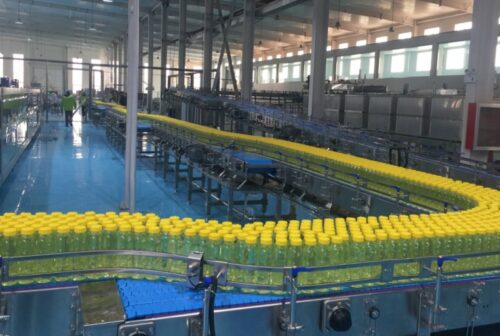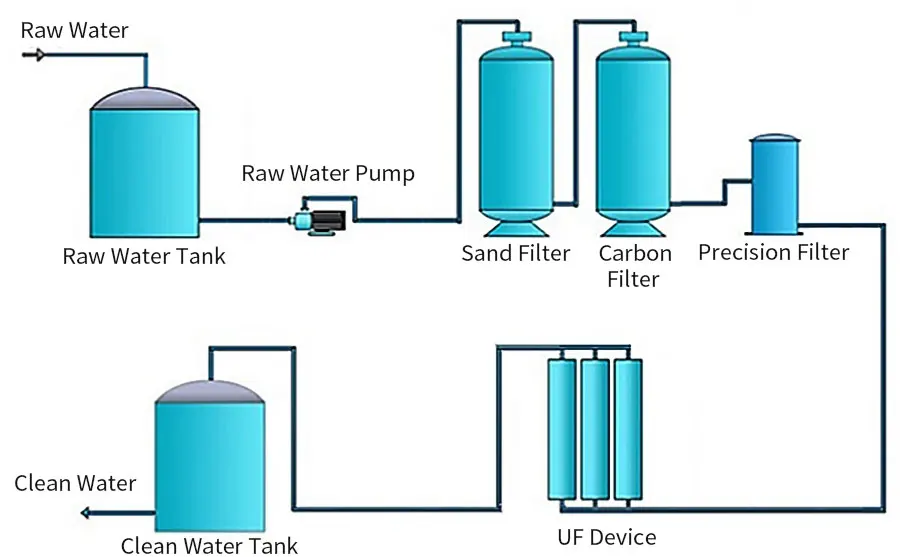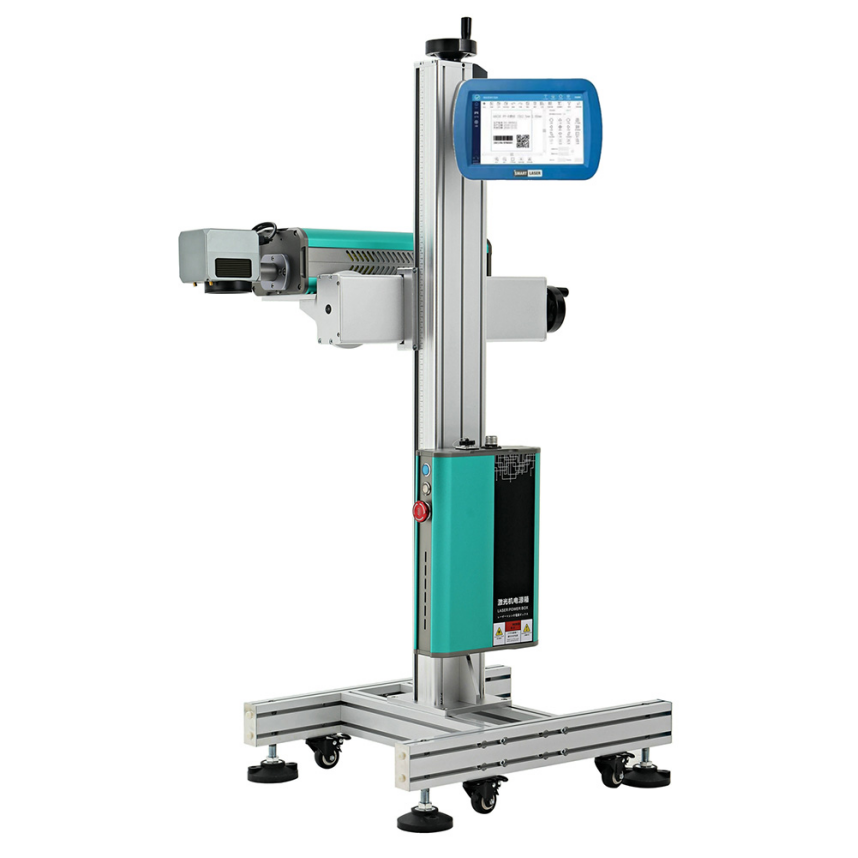Today, the most common technologies used in beverage filling include hot filling, cold filling and aseptic filling. Commonly used packaging containers are glass bottles, plastic bottles, cans, lined cardboard cartons and flexible containers (bags). The following introduces these 3 canning technologies.
Hot filling
Hot filling is a method of sterilizing the product by heating it and filling it at high temperature. This process not only sterilizes the product, but also treats the container and closure. Hot filling is low-cost and is suitable for non-carbonated beverages and liquid foods such as juices, vegetable juices, fruit drinks, soft drinks, energy drinks and tea drinks.
Products using hot filling technology usually have a shelf life of 6 to 12 months. Its working principle is similar to that of a gravity low vacuum system, but the design of the machine and its filling valves allows the product to circulate in the can and the filling valve, thereby maintaining a constant filling temperature when the machine stops running.
Hot filling technology can be carried out at a high temperature of 90°C, ensuring constant filling temperature, accurate liquid level and complete product recovery. If you are unsure how to get started with hot filling technology, you can contact Huirun Beverage Machinery, they are an excellent supplier of juice filling machines and juice production lines, and can provide the right solution for your product.
Choosing the right hot filling technology for your product is crucial to your brand. Make sure to provide the best customer service for your product packaging so that you can get advice on the best bottles, tubes, closures, caps and other packaging needs.
Advantages:
• Must be sterilized to extend the shelf life of the juice, and can be stored at room temperature for a long time.
• No chemicals or preservatives are required to maintain the naturalness of the juice.
• Packaging does not require any chemical disinfection.
• Can be used with a variety of juices during production and packaging.
Disadvantages:
• Remember: hot filling requires heavier bottles, that is: more expensive. When the product is hot filled, a heavier bottle is required. Consider using 24g and 16g PET bottles for hot filling and other packaging types.
• It may affect the taste when cooked
• It may affect nutritional deficiencies
• It may change color
Cold filling
Packaging of juice using the cold filling method usually requires refrigerated distribution at a temperature of about 0-5°C, and the product shelf life is about 4-6 weeks. The cold filling system with refrigeration throughout the distribution cycle can preserve the flavor of the juice, making it taste almost the same as the original flavor, even if flavorings or additives are added to the liquid. Whether the juice is squeezed from fresh fruit or a mixture of concentrated juices, the refrigeration method can well preserve the smell and various vitamins of the juice. However, the cost of this refrigerated distribution is relatively high.
During the cold filling process, by cooling the product and container, the container is pressurized and the cold product is added to the cold container. Cold filling is usually used for fresh products such as juice and milk, as well as carbonated beverages such as soda and other carbonated beverages.
Isobaric fillers are suitable for carbonated soft drinks. PET or glass packages are loaded into the isobaric filler, capped and pasteurized in the tunnel. The filling temperature is 3ºC to 4ºC and the tunnel is long.
The ultra-clean system is suitable for filling beverages at low temperatures and the environmental conditions are very strict. Such products usually have a short shelf life of about 30 days and are distributed under low temperature refrigeration conditions. They are of high quality, flash pasteurized, and suitable for cartons and PET packaging.
Advantages:
• There is a developed production and packaging system. The cost of machinery investment is low.
• There is an opportunity to recover the investment in a short period of time.
• The product quality is good, resulting in a high price.
• Create a good product and brand image.
Disadvantages:
• A refrigeration system must be used throughout the distribution cycle. Causes high costs
• A fast delivery system must be available. The delivery frequency is high and good delivery efficiency must be achieved.
Aseptic filling
Aseptic filling is an advanced technology in which the product is pasteurized or ultra-high temperature instantaneous sterilization (UHT) to eliminate microorganisms before entering the filling machine, and then filled at room temperature. Prior to filling, the container and closure must be sterilized, with common methods including hot air sterilization and hydrogen peroxide vapor sterilization. The entire filling process is carried out in a sterile environment, with sterile air filtration systems and sterile air curtains to maintain sterility inside the equipment.
Aseptic filling is suitable for high-acid products (pH below 4.5) and can be stored at room temperature for up to 18 months without refrigeration. This technology is becoming increasingly popular for all-natural and organic beverages because no preservatives are added. Soda and other carbonated beverages are usually filled into glass bottles, aluminum bottles, aluminum cans or PET containers using counter-pressure fillers, which first pressurize the container with carbon dioxide and then seal it.
Beverage containers vary, including glass bottles, cans, plastic containers (PET, HDPE, LDPE), lined cardboard containers and flexible containers (such as bag-in-bag containers). Flexible containers are often used for juices and other beverages, and some are equipped with plastic nozzles and can be produced and filled simultaneously on vertical or horizontal form, fill and seal machines (FFS), especially for children’s beverages. Beverage cans made of cardboard have become increasingly popular in recent years because they are less expensive, easier to recycle and more environmentally friendly than cans made of metal, aluminum or tinplate.
Aseptic filling technology is the most effective way to preserve the nutritional, sensory and shelf life qualities of the product. In this technology, the packaging is sterilized by peroxide or peracetic acid before filling and then dried to eliminate residues. The aseptic filling environment is maintained by air filtration and high temperature sterilization. The earliest aseptic filling technology was developed for carton packaging and was widely used for milk packaging. It has now developed into aseptic filling machines for cartons and PET bottles.
Advantages:
• No preservatives
• Good for preserving flavor, color and nutritional value of certain products (such as juice)
• Reduced energy requirements for maintaining inventory
Disadvantages:
• Concerns about replacing glass with plastic
• Loss of nutrients during rapid heating
• Challenges in recycling currently used packaging materials
• Challenges in maintaining and creating a sterile environment
• High temperature pasteurization may also kill some non-pathogenic beneficial microorganisms in the product
Juice Taste Comparison and Storage Impact
Taste tests showed that there was no significant difference in taste between juices produced using hot filling and aseptic filling methods. Juices from both filling methods could be stored for 60 days at the same storage temperature. Juices filled aseptically had a slightly better flavor immediately after filling, but this difference gradually disappeared after storage at 4 degrees Celsius for a period of time. However, even when stored at 4 degrees Celsius, juices in all packaging forms still tasted better when stored at low temperatures than when stored at high temperatures.
Therefore, it is beneficial to carefully observe the filling method of the product before purchasing. Filling methods using high temperatures will be different compared to filling in ordinary bottles. Hot filling takes less time, helps preserve the flavor and color of orange juice, and reduces the destruction of nutrients.
Conclusion
In summary, the choice of beverage filling technology has an important impact on the shelf life, taste and nutritional value of the product. Hot filling technology is suitable for non-carbonated beverages and liquid foods, with lower costs and longer shelf life, but requires heavier bottles and may affect taste and nutrition. Cold filling technology is suitable for fresh products and carbonated beverages, which can well preserve the flavor and nutrition of juice, but needs to be kept refrigerated throughout the distribution cycle, which is costly. Aseptic filling technology is the most advanced, suitable for high-acid products, does not require preservatives, and can store products at room temperature for a long time while maintaining their flavor and nutritional value, but the installation cost is higher and the technical requirements are more stringent.
When choosing the right filling technology, companies need to consider the characteristics of the product, market demand and cost factors to ensure that consumers are provided with high-quality beverages. At the same time, understanding the advantages, disadvantages and scope of application of various filling technologies can help companies gain an advantage in market competition. No matter which filling technology is chosen, it is the key to the development of the beverage industry to always be guided by consumer needs and continuously improve product quality and service levels.



